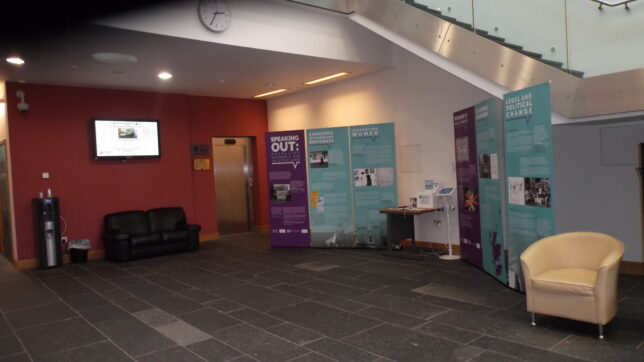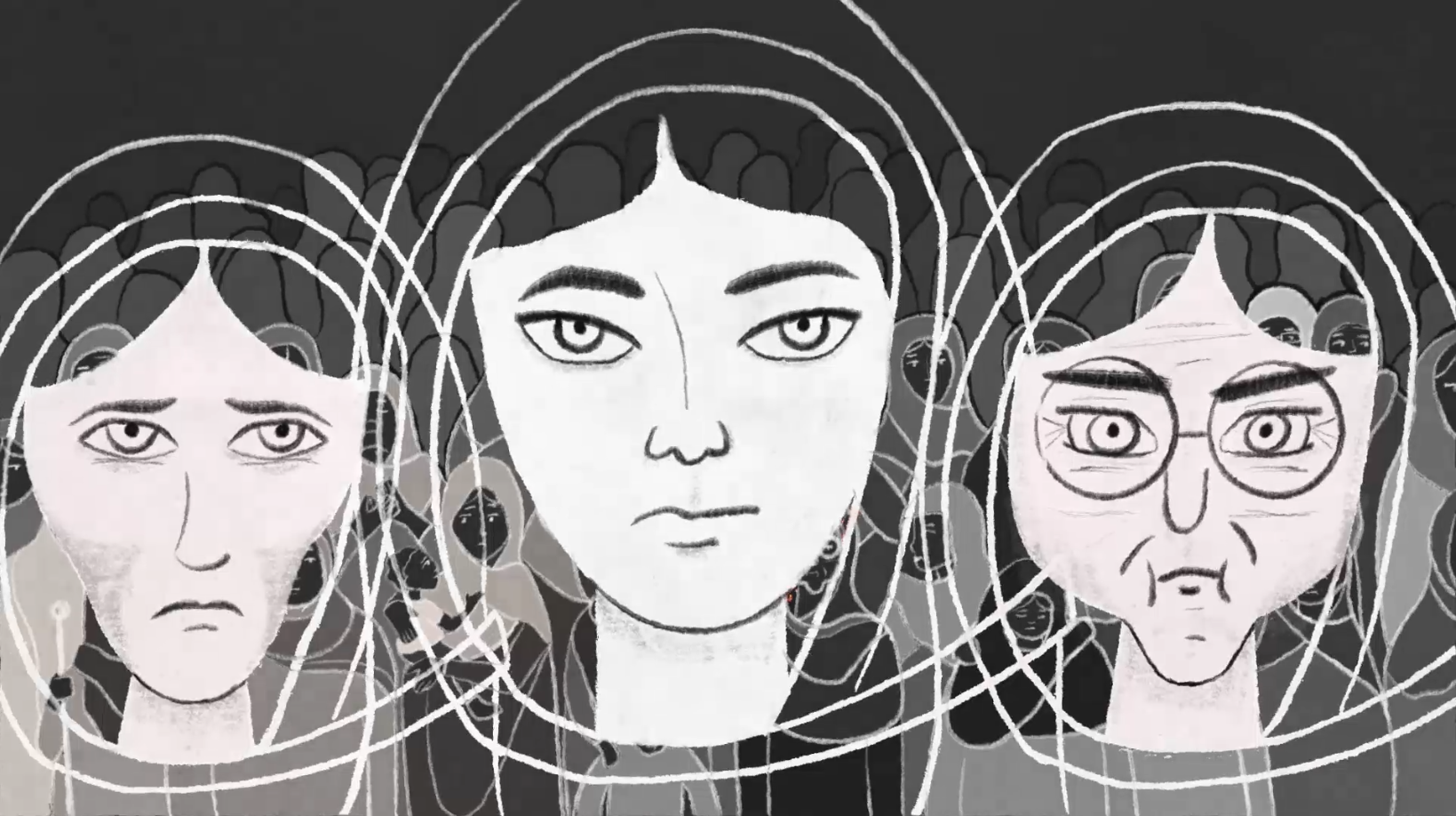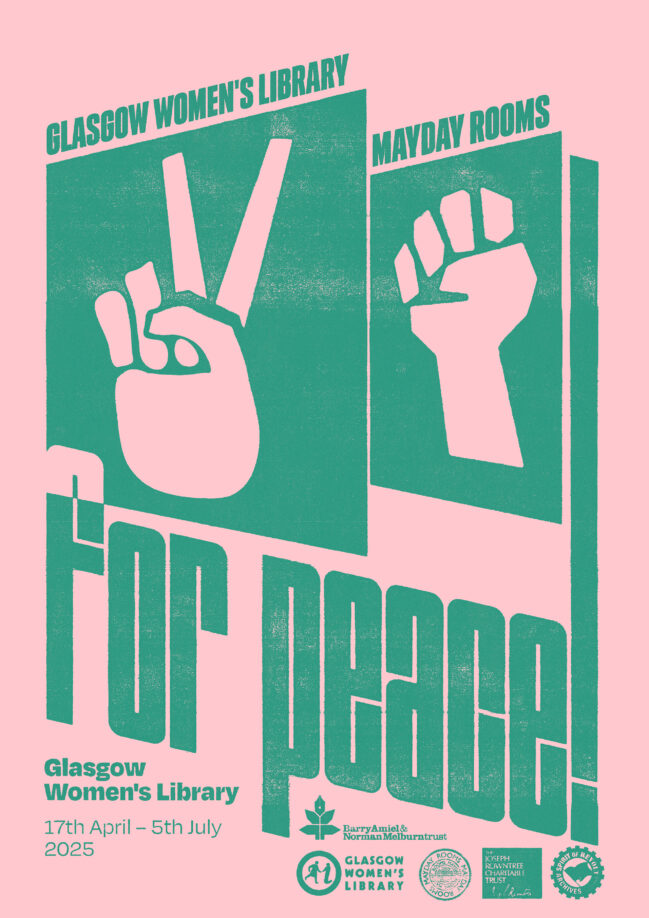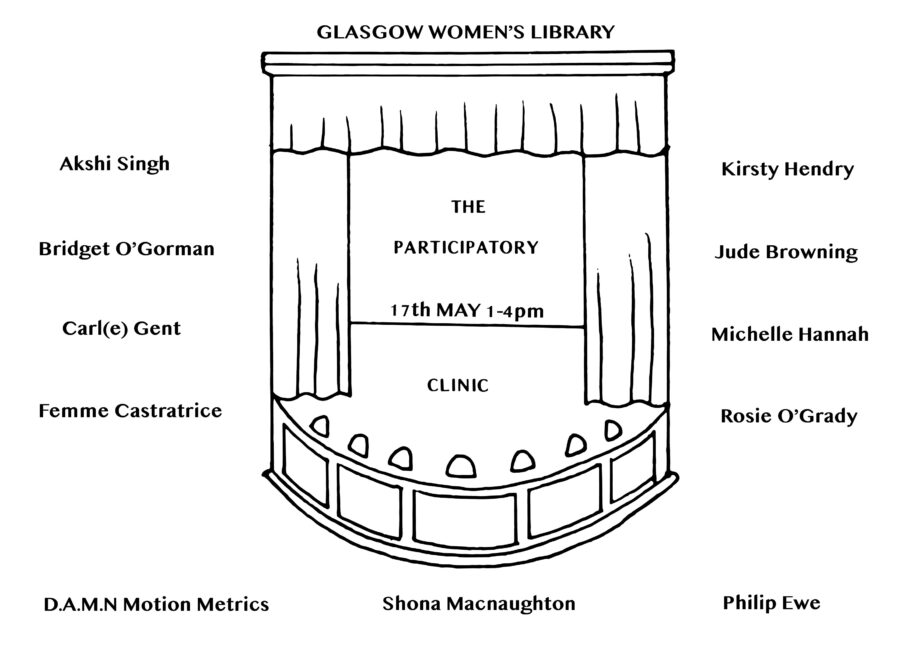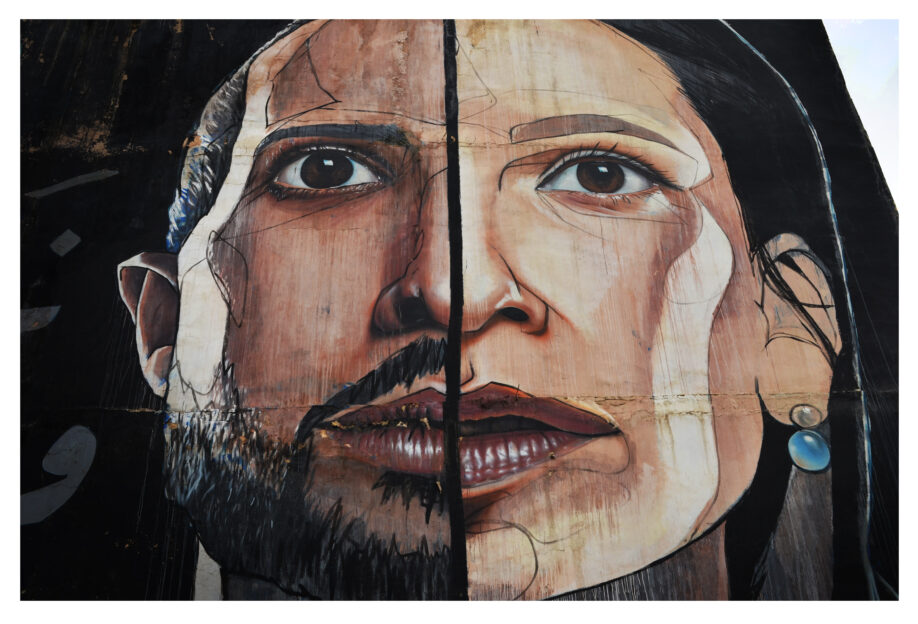Project volunteer Margaret Moore takes us on a tour of the Speaking Out exhibition which was on display in Inverness during March. The exhibition is currently on show in the Pathfoot Building at the University of Stirling until 16 June. All exhibition touring venues and dates are listed on our events page. Please check with individual venues for opening times.
________________________________________________________________________________________________
I’m one of the volunteer interviewers who took part in the Speaking Out project marking the 40th anniversary of Scottish Women’s Aid in 2016. I was keen to see the result of our efforts when the exhibition came to Inverness. Up here, the exhibition was in two parts; one part in the Inverness Museum and Art Gallery in the centre of the city and the other in the Highland Archive Centre a little way out. This was a bit challenging as you really needed to visit both to get the full effect.
I went to the Inverness Museum and Art Gallery first. The exhibition was in the Discovery Room, used for educational visits and events. This part of the exhibition had panels on the walls covering Collective Working, A Gendered Analysis of Domestic Abuse, Working with Children and the work of the Dobashes. There was also a case displaying leaflets and Women’s Aid memorabilia along with a handbag loaned by a domestic abuse survivor, the only thing she took, apart from her young son, when fleeing her abuser. The bag was my favourite thing. I had one like it and used to rub cream into it to keep it nice. Good, respectable black leather, caught up in dread and fear when she fled.
A few days later I got the car out and went to the Highland Archive Centre. I’m so glad I did as it greatly added to the experience of the exhibition. The archive centre is a new building by the River Ness. Set up in the spacious, light foyer were six large information panels, separated by a small table and – the jewel at the heart of it all, in my view – a listening station where you could hear some of the recorded interviews. The panels began with an explanation of the 40th anniversary of Scottish Women’s Aid and the Speaking Out project, went on to delve into attitudes towards abuse back in the 1970’s and how Women’s Aid worked to change them, the refuges, the special circumstances of black and ethnic minority women. The relationship between Women’s Aid and the Women’s Liberation Movement was explored and there was a photo of a handwritten list with the 7 Demands of the WLM. No 1 is “Equal Pay for Equal Work”, No 2 “Equal Job Opportunities”. This was the first time I’d seen the 7 Demands. Legal and political changes affecting and resulting from Women’s Aid campaigns were detailed, including devolution, and the panels brought the situation up to the present day with a map showing locations of the local Women’s Aid groups across Scotland. The panels were in the Women’s Aid colours of turquoise and purple with information interspersed by photos, diagrams and quotes from women who played a part.
The listening station had interviews from service users, support workers, people in government and academic researchers. I loved this wormhole into history. It was easy to use and the sound was clear.
My take-away from the exhibition? I didn’t realise how many changes in the law were brought about by Women’s Aid and the Women’s Movement: re-housing abused women, stalking, harassment, forced marriage, sexual abuse, human trafficking and, with the help of others, the Equal Pay, Sexual Discrimination and Equal Opportunities Acts (superseded now by the Equality Act 2010). It was great to hear Marilyn Ross again via the listening station, laying out her story as she did across the table from me when I interviewed her, and interesting to listen to the other women whose interviews were featured, particularly Nicola Borthwick explaining how, for six years, she couldn’t attach the idea of abuse to what was happening to her.

